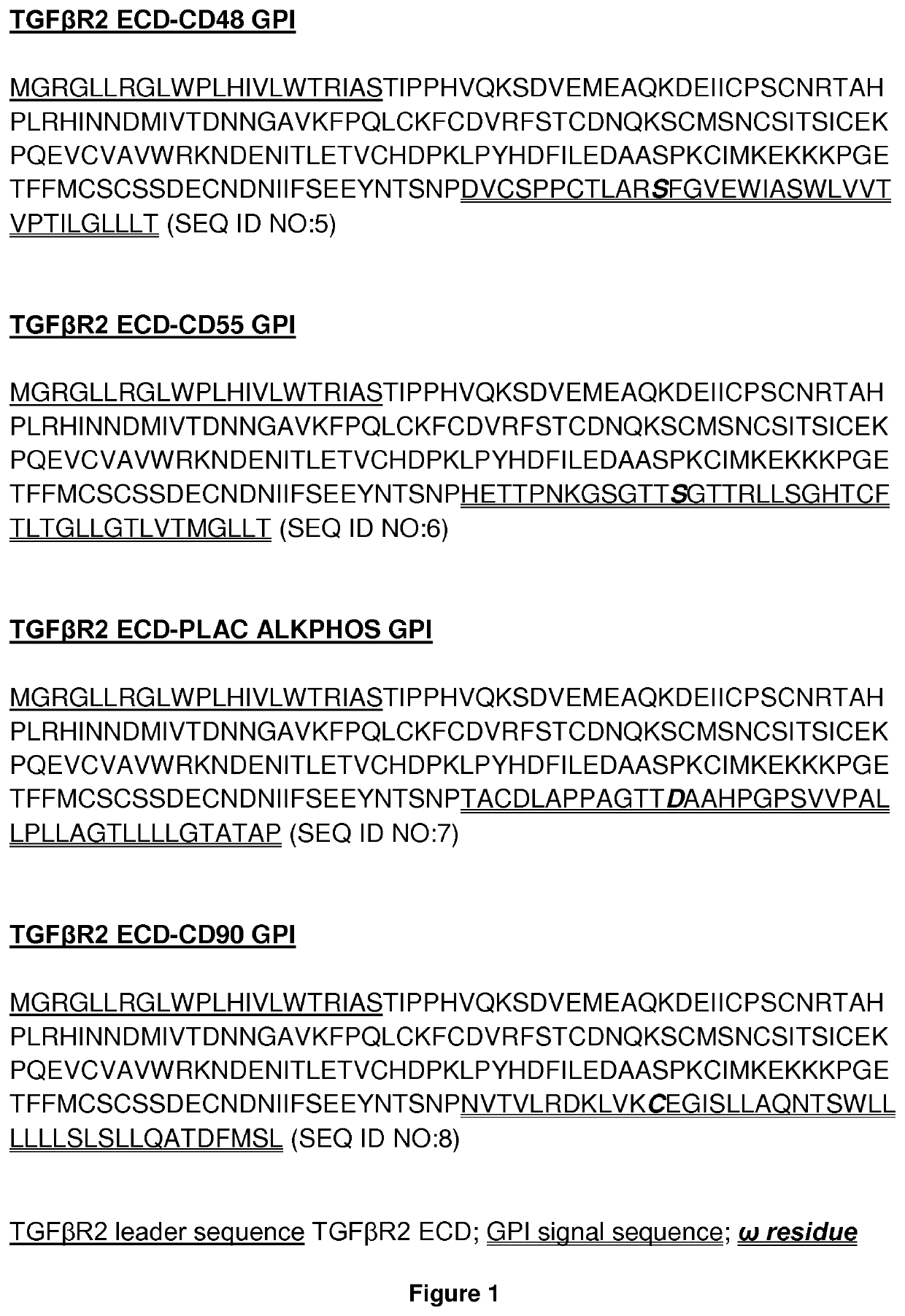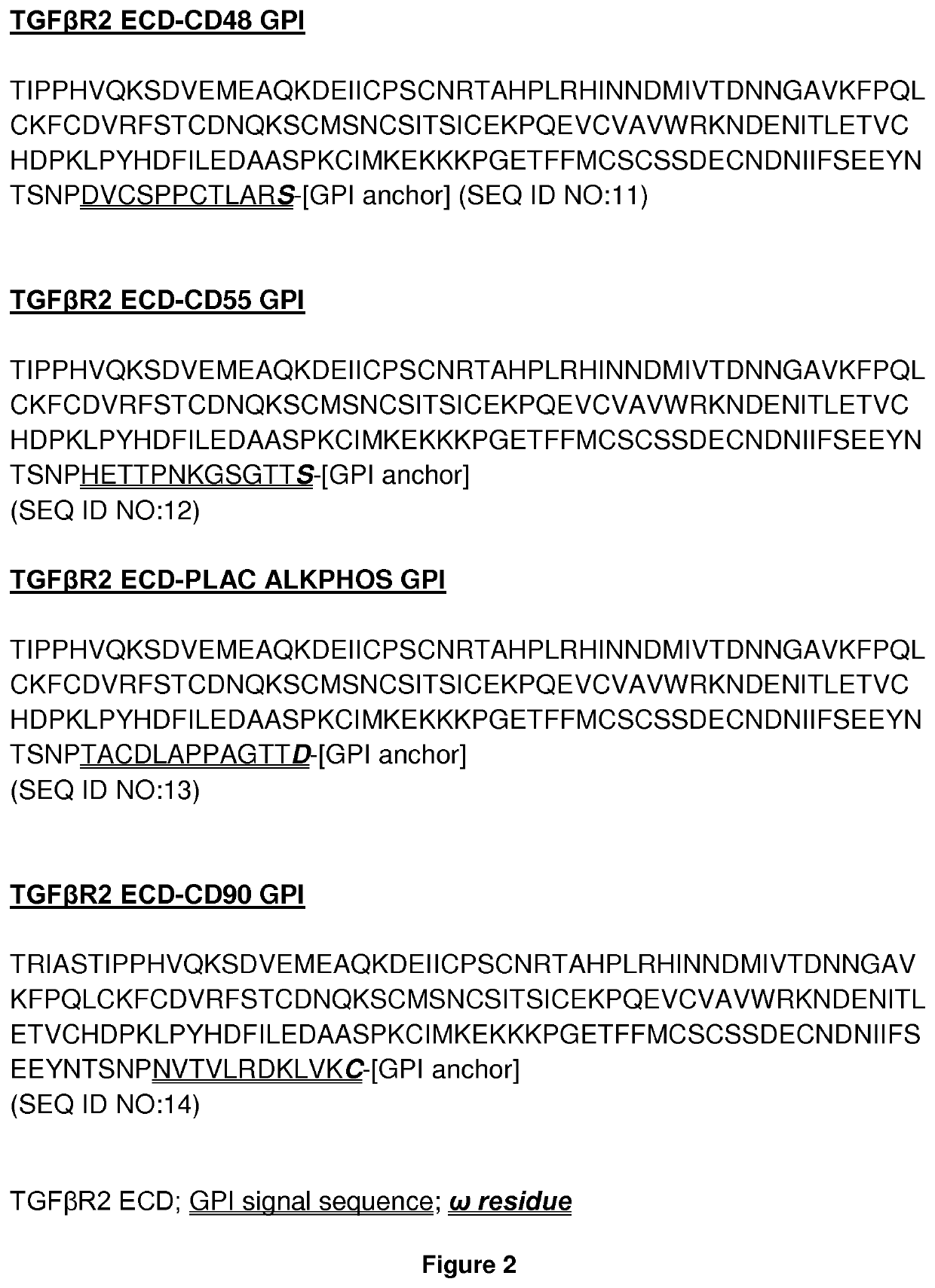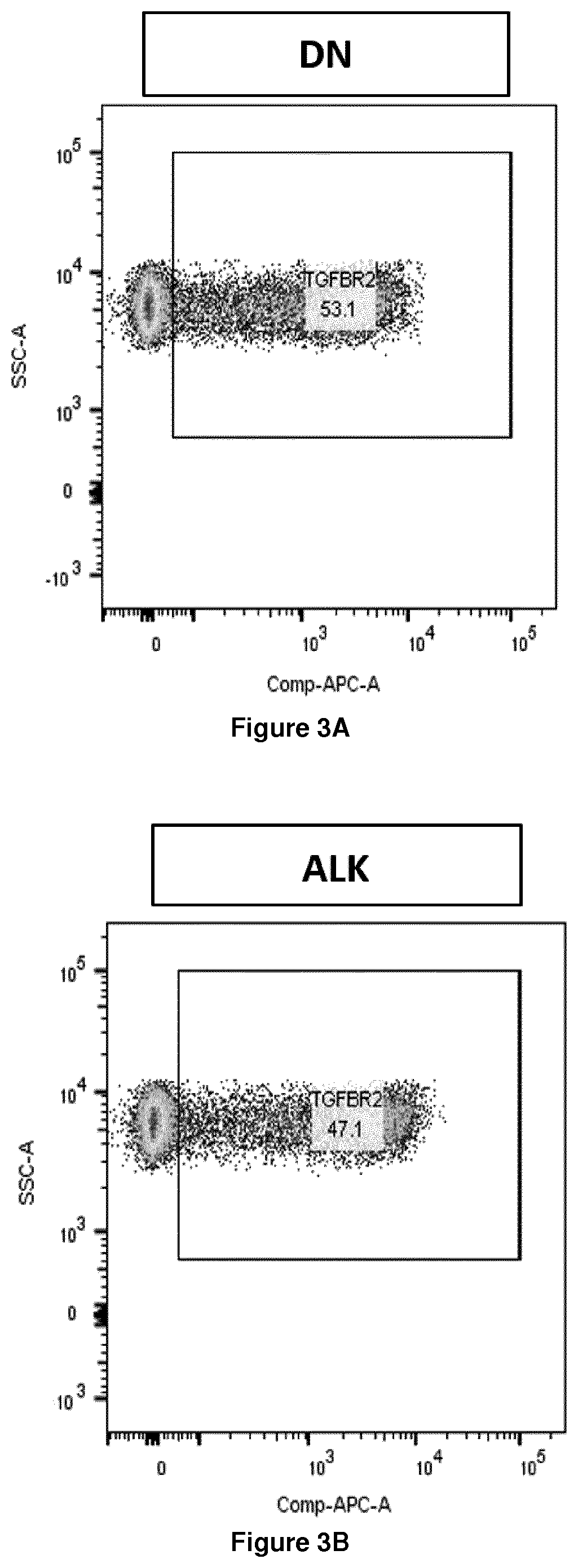Tgf-ß decoy receptor
a technology of transforming growth factor and decoy receptor, which is applied in the direction of growth factor/regulator receptors, animal/human proteins, non-active ingredients in the manufacture of drugs, etc., can solve the problems of limited long-term persistence of transferred t cells and the difficulty of overcoming the suppressive nature of the tumor microenvironmen
- Summary
- Abstract
- Description
- Claims
- Application Information
AI Technical Summary
Benefits of technology
Problems solved by technology
Method used
Image
Examples
example 1
[0403]A lentiviral vector is used to prepare TGF-β decoy receptor constructs encoding the TGF-β binding domain of the type II receptor for TGF-β and different cell membrane anchor regions.
[0404]The cDNA for the extracellular domain of type II receptor for TGF-β is cloned in-frame with cDNA encoding the glycosylphosphatidylinositol (GPI) anchor sequences for CD48, CD44, CD55, CD90 or placental-type alkaline phosphatase (amino acid sequences encoded by the constructs are shown in FIG. 1).
example 2
Generation of TGF-β Decoy Receptor Expressing Human T Lymphocytes
[0405]For lentiviral transduction, 5×106 HEK 293T cells are plated on 10 cm2 dish pre-coated with 0.002% poly-L-lysine (Sigma, St. Louis Mo.). The lentiviral vector is co-transfected with plasmids encoding packaging and envelope genes, and several days after co-transfection virus-containing supernatant is collected and passed through a 0.45 μm filter. The supernatant is then concentrated by ultracentrifugation at 25,000 rpm, titered, and then stored at −80° C. until use.
[0406]Primary human T lymphocytes isolated from healthy donors are acquired. T cells are cultured in complete medium (RPMI 1640 supplemented with 10% inactivated FBS, penicillin and streptomycin sulfate), and activated by stimulation with anti-CD3 and anti-CD28mAb-coated beads (Invitrogen). 12 hours after activation, the T cells are transduced with lentiviral vectors in presence of polybrene. Human T lymphocytes are expanded and maintained by addition o...
example 3
Functional Characterisation of T Cells Expressing the TGF-β Decoy Receptors
[0407]T cells modified to express TGF-β decoy receptors are analysed for surface expression of the decoy receptors.
[0408]Briefly, T cells are transduced with constructs encoding TGF-β decoy receptors according to the present invention, a negative control construct, or construct encoding DN-TGF-βR2, and expression at the cell surface is analysed by flow cytometry analysis using an antibody capable of specific binding to the extracellular domain of TGF-βR2.
[0409]T cells transduced with constructs encoding the TGF-β decoy receptors of the present disclosure display more surface staining with anti-TGF-βR2 antibody as compared to T cells transduced with the negative control construct, or construct encoding DN-TGF-βR2.
3.2 Soluble Expression
[0410]T cells modified to express TGF-β decoy receptors are analysed for soluble expression of the decoy receptors.
[0411]Briefly, T cells are transduced wit...
PUM
| Property | Measurement | Unit |
|---|---|---|
| concentration | aaaaa | aaaaa |
| concentration | aaaaa | aaaaa |
| temperature | aaaaa | aaaaa |
Abstract
Description
Claims
Application Information
 Login to View More
Login to View More - R&D
- Intellectual Property
- Life Sciences
- Materials
- Tech Scout
- Unparalleled Data Quality
- Higher Quality Content
- 60% Fewer Hallucinations
Browse by: Latest US Patents, China's latest patents, Technical Efficacy Thesaurus, Application Domain, Technology Topic, Popular Technical Reports.
© 2025 PatSnap. All rights reserved.Legal|Privacy policy|Modern Slavery Act Transparency Statement|Sitemap|About US| Contact US: help@patsnap.com



